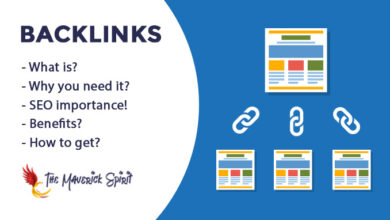From Concept to Shelf: How to Navigate the Packaging Design Process

Creating great packaging design is a critical aspect of product development, serving as the bridge between your brand and consumers.
It’s not just about wrapping a product in an attractive box; it’s about conveying your brand’s identity, protecting your product, and enticing customers to make a purchase.
Navigating the packaging design process effectively requires careful planning, collaboration, and attention to detail. Let’s explore the journey from concept to shelf and uncover key steps to ensure success.
1. Define Your Objectives and Audience
Before diving into the design phase, it’s essential to establish clear objectives and identify your target audience.
Ask yourself: What message do you want your packaging to convey? What emotions or associations do you want it to evoke in consumers?
By defining your goals and understanding your audience’s preferences and needs, you can tailor your packaging design to resonate with your target market effectively.
Key Considerations:
- Define the primary function of your packaging (e.g., protection, branding, information dissemination).
- Conduct market research to gain insights into consumer preferences, competitor packaging, and industry trends.
- Develop buyer personas to better understand the demographics, behaviors, and pain points of your target audience.
2. Collaborate with Design Experts
Once you have a clear understanding of your objectives and audience, it’s time to bring your vision to life through creative collaboration.
Enjoy big advantages by partnering with experienced designers or agencies who specialize in packaging design to leverage their expertise and creativity. Work closely with your design team to translate your brand identity and messaging into visually compelling packaging concepts.
Collaboration Tips:
- Provide designers with a comprehensive creative brief outlining your brand guidelines, product specifications, and design preferences.
- Foster open communication and collaboration throughout the design process, soliciting feedback and ideas from all stakeholders.
- Be open to constructive criticism and willing to iterate on designs to achieve the desired outcome.
3. Conceptualize and Iterate
The design process typically begins with brainstorming and conceptualization, where designers explore various ideas and visual concepts.
This phase involves sketching, prototyping, and refining designs based on feedback and feasibility considerations.
Don’t be afraid to experiment with different approaches and iterate on designs until you find the perfect balance of creativity, functionality, and brand alignment.
Iteration Process:
- Generate multiple design concepts that align with your brand’s aesthetic and messaging.
- Gather feedback from internal stakeholders, focus groups, or target consumers to evaluate the effectiveness of each design concept.
- Iterate on designs based on feedback, refining visual elements, typography, color schemes, and structural elements as needed.
4. Consider Practicality and Functionality
While aesthetics are important, packaging design must also prioritize practicality and functionality.
Your packaging should benefit you by only looking good but also fulfilling its intended purpose, whether it’s protecting your product during transit, providing essential information to consumers, or facilitating ease of use.
Consider the logistics of production, assembly, and distribution when finalizing your design to ensure feasibility and cost-effectiveness.
Functional Considerations:
- Choose materials that offer the necessary durability, flexibility, and sustainability for your product and distribution needs.
- Optimize packaging dimensions and structures to minimize waste, reduce shipping costs, and enhance shelf space efficiency.
- Incorporate user-friendly features, such as easy-open seals or ergonomic handles, to enhance the overall consumer experience.
5. Test and Validate Designs
Before mass production, it’s crucial to test and validate your packaging designs to ensure they meet your objectives and resonate with your target audience. Conducting small-scale prototype testing or mockups allows you to gather valuable feedback, identify potential issues, and make necessary adjustments before finalizing your design for production.
Testing Methods:
- Conduct focus groups or surveys to gather feedback on packaging designs from representative samples of your target audience.
- Perform usability testing to evaluate the functionality and ease of use of packaging prototypes.
- Conduct A/B testing or eye-tracking studies to assess the visual impact and effectiveness of different design variations.
6. Production and Implementation
Once your packaging designs have been finalized and validated, it’s time to bring them to life through production and implementation. Work closely with packaging manufacturers and suppliers to ensure quality control, consistency, and adherence to your design specifications. Monitor the production process closely to address any issues that may arise and ensure timely delivery of finished packaging materials to market.
Production Considerations:
- Select reputable packaging manufacturers and suppliers with a track record of quality and reliability.
- Provide detailed production specifications and artwork files to ensure accurate replication of your designs.
- Conduct quality control checks at various stages of production to verify adherence to design standards and specifications.
7. Monitor and Iterate Based on Feedback
The packaging design process doesn’t end once your products hit the shelves—it’s an ongoing journey of refinement and optimization. Monitor consumer feedback, sales performance, and market trends closely to identify opportunities for improvement and iterate on your packaging designs accordingly. Stay agile and responsive to evolving consumer preferences and market dynamics to maintain a competitive edge in the marketplace.
Continuous Improvement:
- Gather feedback from consumers through surveys, reviews, and social media interactions to identify areas for improvement.
- Monitor sales data and market trends to assess the effectiveness of your packaging designs and make data-driven decisions.
- Iterate on packaging designs based on feedback and insights, incorporating new ideas, trends, and technologies to stay relevant and competitive.
Stay The Path
In conclusion, navigating the packaging design process requires careful planning, collaboration, and attention to detail.
By defining clear objectives, collaborating with design experts, conceptualizing and iterating on designs, considering practicality and functionality, testing and validating designs, overseeing production and implementation, and monitoring and iterating based on feedback, you can create packaging that not only showcases your brand identity but also resonates with consumers and drives success in the marketplace.



